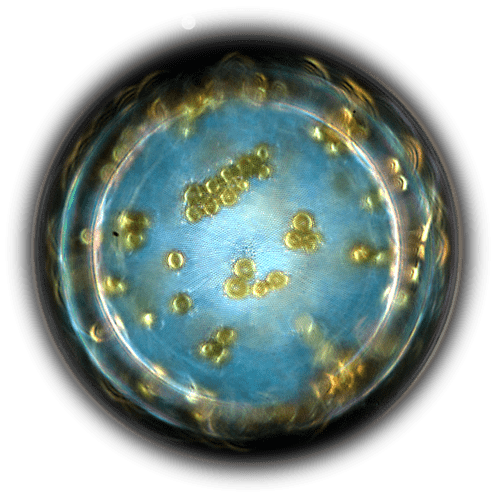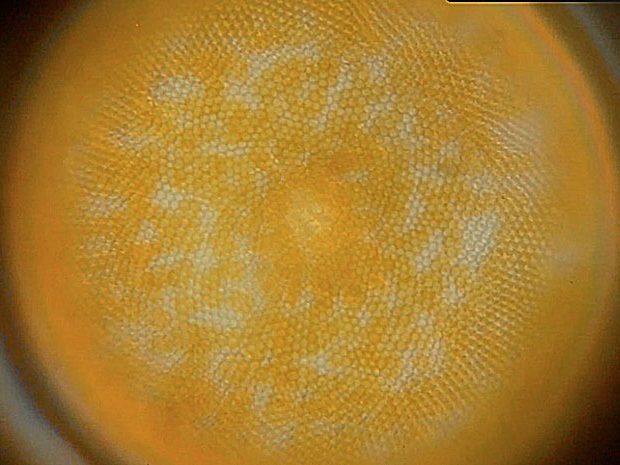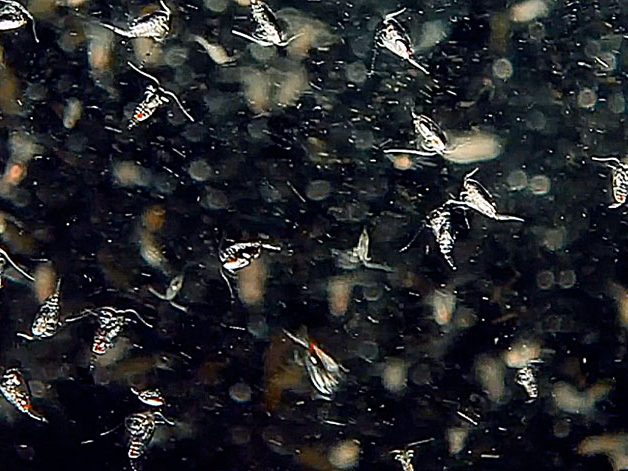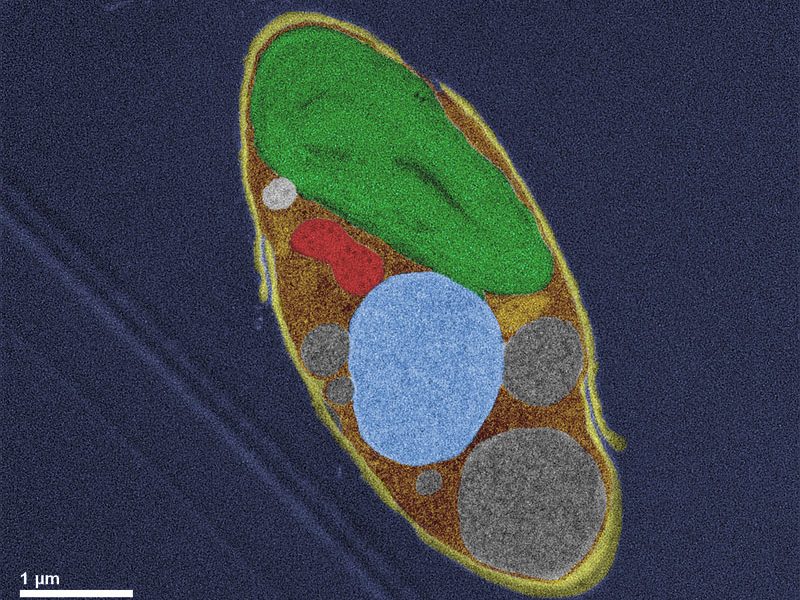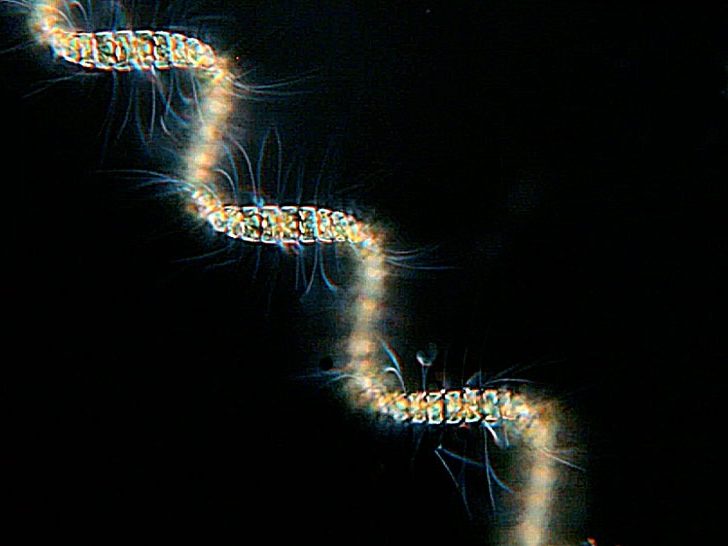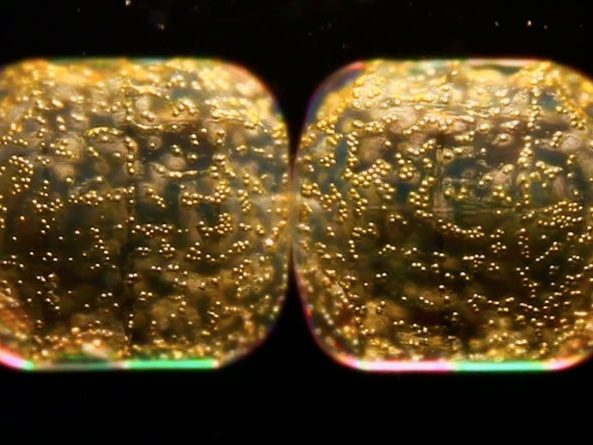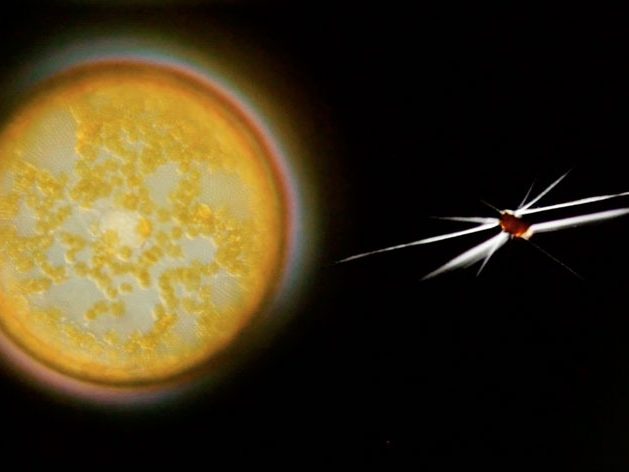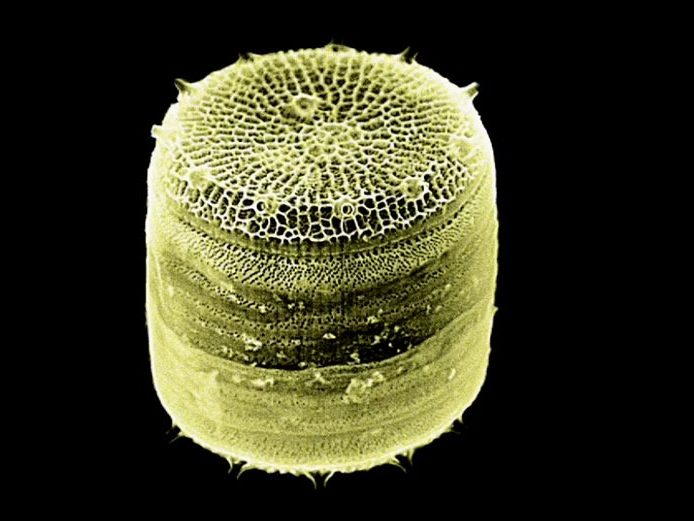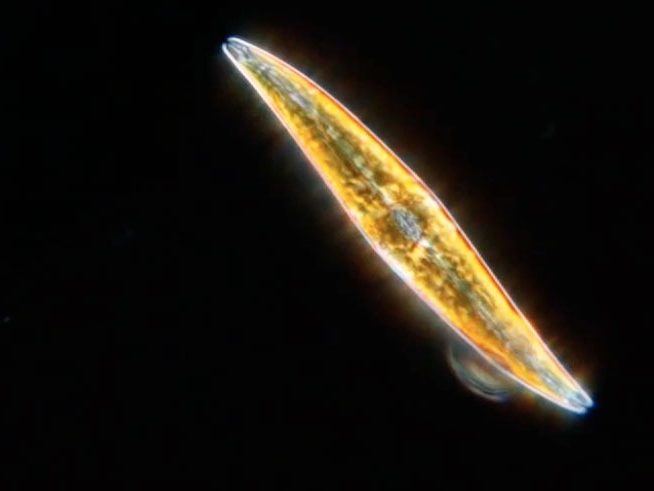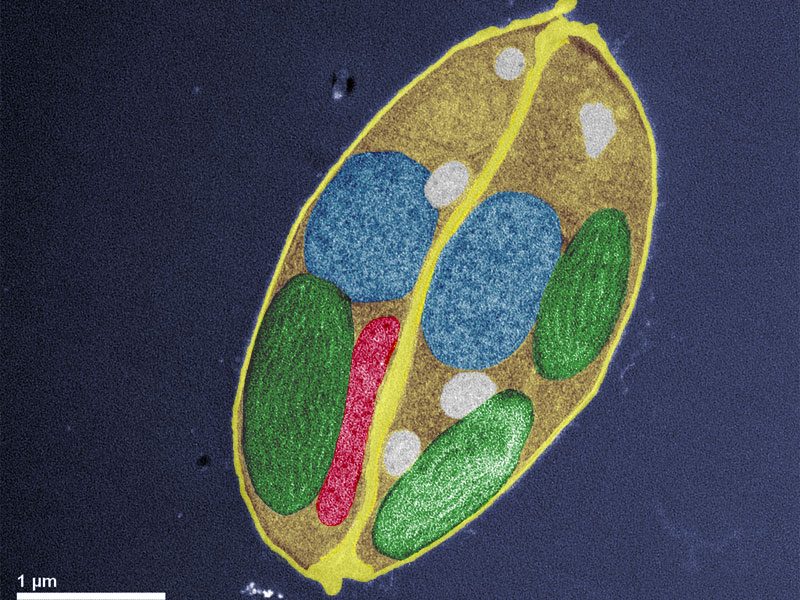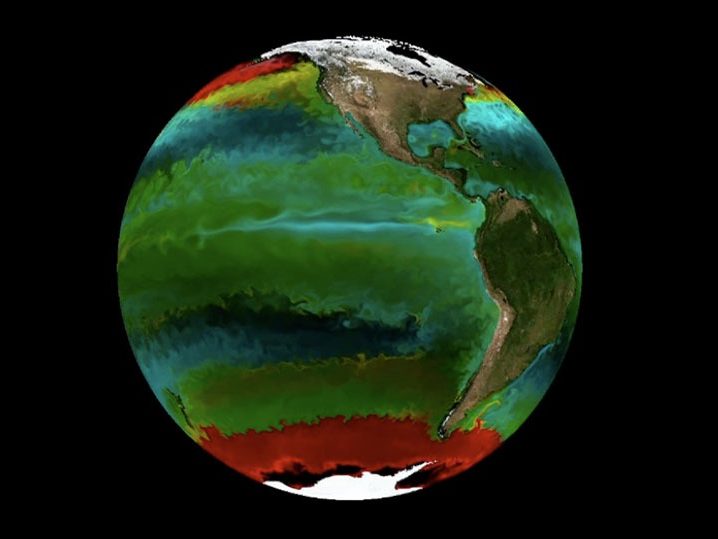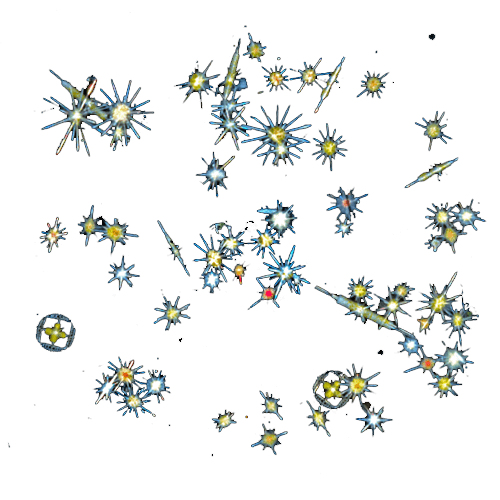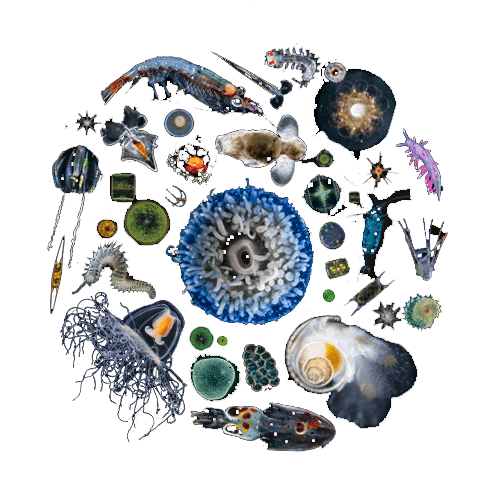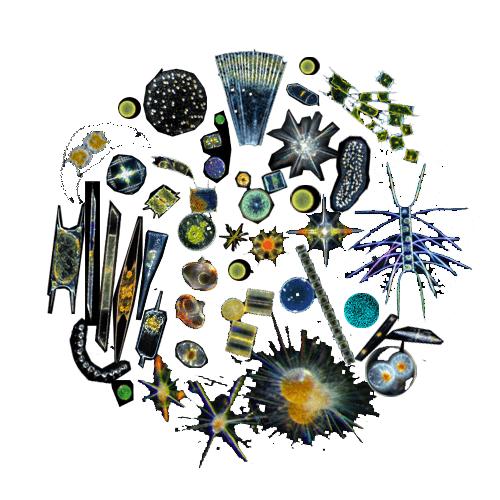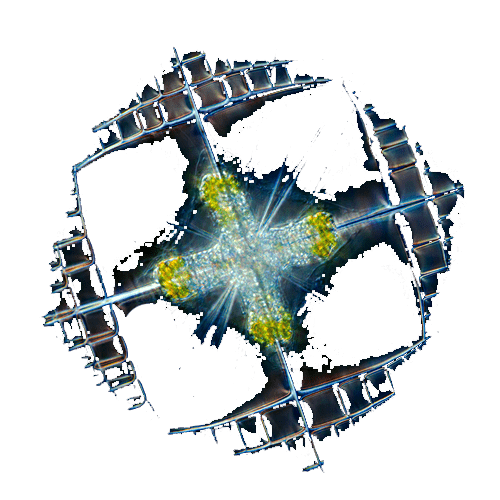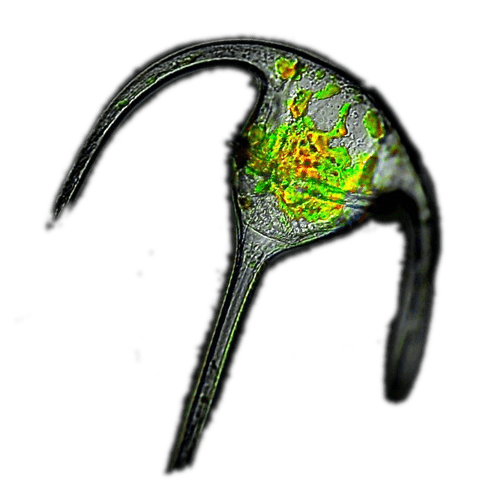In this episode
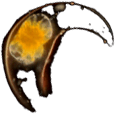 DinoflagellatePyrocystis elegans
DinoflagellatePyrocystis elegans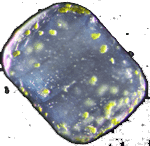 Centric diatom
Centric diatom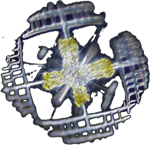 AcantharianLithoptera mulleri
AcantharianLithoptera mulleri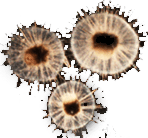 RadiolarianAulacantha scolymantha
RadiolarianAulacantha scolymantha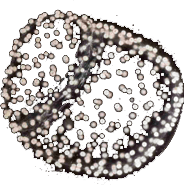 RadiolarianCollozum inerme
RadiolarianCollozum inerme
Photos
Narration
Diatoms capture solar energy and produce a quarter of our planet’s oxygen. Despite their tough, siliceous shells, these phytoplankton are abundantfood for copepods and are at the base of the marine food chain.
Diatoms are single-celled organisms with nuclei and chloroplasts. They are protists living individually or forming chains, zig zags or spirals. The first diatoms – the centrics – appeared in the Jurassic age some 200 million years ago, as combinations of yeast-like organisms and algae. Over the eons,diatoms acquired new genes, shapes and complex metabolisms. They’ve becomechampions of photosynthesis, while retaining many properties of animal cells.
With other photosynthetic protists, they produce oxygen and absorb CO2. Over millions of years, diatom shells have sunk to the seabed, forming thick layers of silica and fossil fuels.
65 million years ago, diatoms survived the mass extinction of dinosaurs. They adapted to polar regions, where they still proliferate. Pennate diatoms appeared later and colonized new ecological niches. Some can glide over surfaces and congregate into a very thin layer called a biofilm. Pennates produce special metabolites and toxins that can ravage aquafarms.
When the sun shines, if iron and silica abound, diatoms flourish by dividing into smaller and smaller units. Survival demands that size be restored. Miniature diatoms transform into male and female gametes that join together and give birth to children much bigger than their parents.
Proliferation of diatoms at the poles result into explosive blooms visible from outerspace.
Share this on
Production
CNRS
Original Idea
Christian Sardet
Director
Sharif Mirshak
Scientific consultant
Chris Bowler
Texts
Christian Sardet
Images
Sharif Mirshak, Noé Sardet, Christian Sardet
Editing
Sharif Mirshak
Sound mix
Romain Strugala
Voice
Gregory Gallagher
Sound Engineer
Romain Strugala
Creative Commons Licence :
Attribution Non-Commercial
No Derivative

